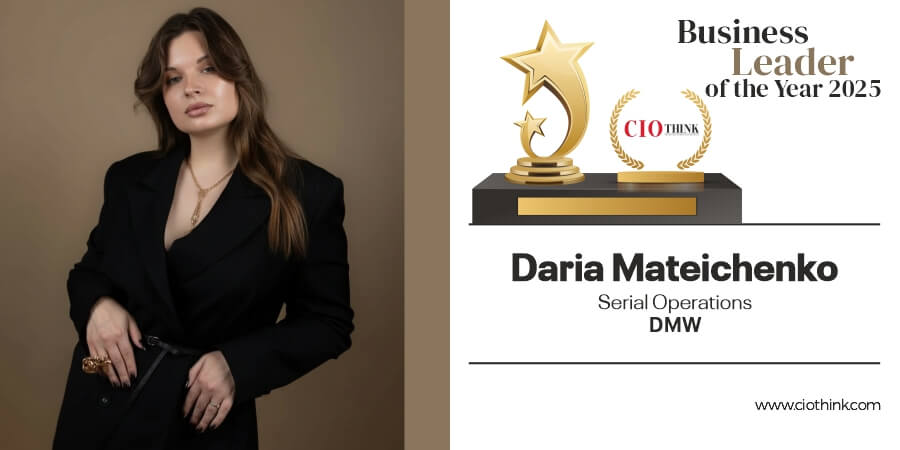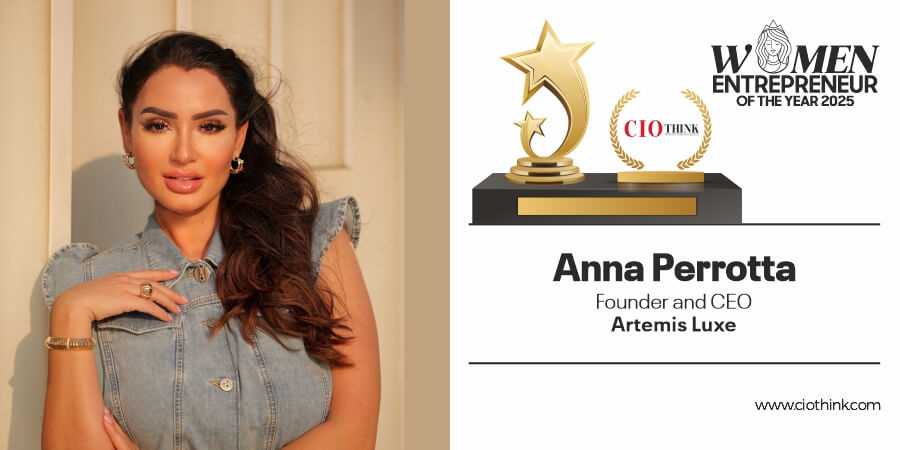Where design becomes emotion, and every space tells a story before a single word is spoken.
Step into a space designed by Misha Andersen, and you’ll sense it before you see it, the quiet confidence, the rhythm of light, the story unfolding between form and feeling. As the Founder and Creative Director of Misha Andersen Studio, Misha has built more than a design practice; she’s built a philosophy. One where walls whisper intention, textures invite emotion, and every corner holds a pulse of human connection.
Her work transcends the boundaries of interior design, blending psychology, storytelling, and spatial intelligence to create experiences that move people from within. Misha doesn’t just shape rooms, she curates moods. She doesn’t follow trends, she sculpts timeless emotions.
For her, design is not about decoration, but transformation, an alchemy of intuition and insight that turns empty space into a living, breathing reflection of identity. “Design should make people feel before they even see,” she often says and through her signature balance of art and empathy, she does exactly that.
At the intersection of strategy and soul, Misha Andersen continues to redefine what it means to design for the human experience, one emotion, one detail, one unforgettable moment at a time.
Misha, what first inspired you to step into the world of design and create a studio that goes beyond interiors to redefine entire identities?
I’ve always believed spaces speak before we do. They shape moods, confidence, and even how we see ourselves. I wanted to build a studio that treats design as storytelling, not just about what you see, but how a place makes you feel.
Growing up, was there a defining moment, place, or influence that sparked your passion for creativity and design?
I grew up obsessed with adventure books, tales of distant lands that made the world feel like a treasure map. So, I set a goal: visit a hundred countries. Every trip reshaped my eye for beauty and contrast, some places felt like home, others challenged everything I thought I knew. I tried to bring pieces of each back with me until someone joked, “You need a shop for all that.” That advice became a spark. Travel, for me, isn’t escape, it’s creative fuel I now pour into every space I design.
Many entrepreneurs talk about a “turning point.” What was the moment when you knew this was not just a career, but your calling?
I’m not sure I’ve had that one grand “this is it” moment, maybe because I’m still chasing it. My path moved through consultancy, where I learned to ask questions; through marketing, where I learned to fight for ideas; and into design, where curiosity finally met creation. Every finished project, retail, spa, gym, or home, gives me that fleeting click of satisfaction, but I know there’s still a project out there bold, fun, and relevant enough to make me say, yes, this is the one. Until then, I keep playing, exploring, and pushing boundaries.
How has your personal journey shaped the values and vision behind your studio?
My journey taught me that curiosity, empathy, and boldness are the best tools a designer can have. Those values became the foundation of my studio, creative enough to dream big, grounded enough to make it real.
Your studio is described as more than interior design—almost a fusion of strategy, creativity, and storytelling. How do you personally define your creative philosophy?
“Form follows feeling.” Strategy gives structure, creativity gives flair, but emotion gives purpose. Every space should tell a story, one you can see, touch, and sense.
What does the phrase “re-designing identities” mean to you, and how do you bring that alive in your projects?
For me, it means designing from the inside out. I start with the essence, the idea, the business, the emotion behind it, and let that guide the space it becomes. It’s about fine-tuning the melody and rhythm of a brand or story, so the environment not only looks right but feels right. And most importantly, it’s about how that feeling will evolve, how the design will age, adapt, and stay true over time.
You work with exhibitions, retail, and customer acquisition strategy. How do you ensure every project reflects both artistry and business impact?
Design is my medium, but psychology is my strategy. Every aesthetic choice must serve an emotional or commercial purpose, the layout that guides movement, the color that makes people linger. Beauty is the magnet; business is the outcome.
Which project so far has been the most meaningful to you emotionally, and why?
Building a girls’ school in India has been a lesson in creativity through constraint. With a limited budget, our imagination flourished, proving that boundaries can fuel innovation. The project reminded me how design can transform spaces and awaken hope
How do you balance aesthetics with functionality when you’re crafting spaces meant to inspire and engage?
Function is the skeleton, aesthetics are the skin, one doesn’t work without the other. True design lives in that balance where practicality feels effortless and beauty feels inevitable.
As a female leader in design and consultancy, what barriers have you had to overcome, and how have those shaped your leadership?
Early in my career, I felt the constant need to prove myself, every project felt like a competition. Now, I find that challenge energizing. It taught me to lead through results, not explanations. I’ve learned that the best ideas don’t need to shout; they just need to work. True leadership isn’t about being the boldest voice in the room, it’s about creating solutions so intuitive that everyone feels it was their idea too.
What has been the toughest challenge in building your studio, and what lesson did it teach you about resilience?
The toughest part has been growing without losing the essence. I’ve learned that resilience isn’t about pushing harder, it’s about holding your vision steady while everything around you expands, shifts, and tests your balance.
How do you inspire and empower your team to bring out their best creativity?
I see my team like a jazz band, everyone improvises, but we’re playing the same tune. I encourage ownership, playfulness, and curiosity. Great design comes from freedom paired with shared direction.
What makes you proudest when you look at your journey as a woman entrepreneur in such a competitive creative industry?
What makes me proudest is the sense of we that runs through everything. Design is a collective act, never about ego, always about participation. The studio reflects my vision, yes, but it’s not built on trends or formulas. It’s a fusion of design, emotion, and experience that feels unmistakably ours.
What does it mean to you personally to be recognized among The Most Iconic Female Personality to Watch in 2025?
“Iconic”? I’m still figuring out my coffee order most days! Titles like that make me smile, but what really matters is impact, the small, everyday kind. I believe recognition starts close to home: how we live, lead, and create energy that inspires others to chase their own ideas. If that’s contagious, then maybe that’s my version of being iconic.
What do you believe makes women leaders especially powerful when it comes to shaping creative industries?
Empathy. Intuition. Emotional intelligence. We’re wired for connection and that’s our creative superpower. Innovation, I think, lives somewhere between a good idea and a great conversation. Women lead with curiosity, not ego; we mix perspectives, lift others up, and keep collaboration alive. We don’t compete, we co-create.
How do you see design evolving in the next 5 years, and where do you want your studio to stand in that future?
Design will keep blurring boundaries, physical, digital, emotional. The next wave is about experience ecosystems. I want my studio to stay ahead by creating spaces that not only look stunning but also connect deeply.
If you could describe the “soul” of your brand in one sentence, what would it be?
Designing spaces that design you back, sensorial and a little flirty, made to let your imagination run wild. Spaces that also know when to be quiet, giving you room to pause, shift, and learn. Always avoiding the obvious, yet finding the energy to stay playful when needed, grown-up and functional, but still just dreamy enough to grow.
You don’t just create spaces—you create experiences. What kind of emotional impact do you want people to feel when they encounter your work?
Transformation. That moment when someone enters a space and feels subtly different — calmer, inspired, or simply more themselves.
What legacy do you hope to leave behind—not just as a designer, but as a woman leader inspiring the next generation?
I’ve never followed the “right timing” I’m always a little offbeat, and I love that about my path. I allow myself to try new things, change direction, learn new skills, and mix cultures, people, and experiences along the way. My hope is that my legacy inspires others to do the same, to stay curious, fearless, and open to reinvention. Because creativity doesn’t follow a straight line; it dances.
Finally, what message would you like to share with women around the world about following their passion and building something iconic?
Women are a grounding force, closely attuned to nature, instinct, and the quiet power of knowing. Some of us put it out in small ways, some of us do it big — but it’s the same strength in various forms. Wherever you are, stay attuned to your own rhythm, trust your instincts, and seek out your dreams they already know the way.






